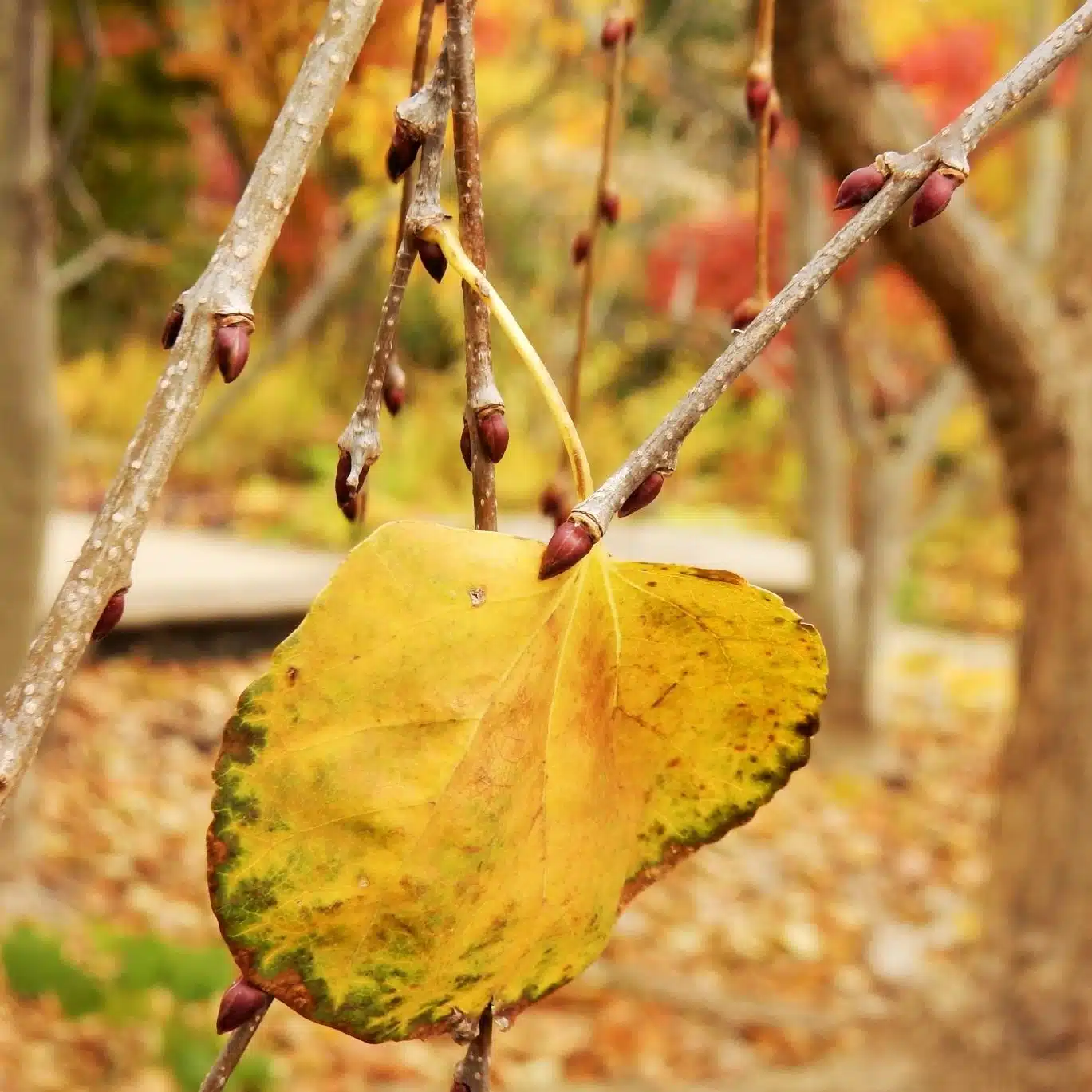Trees
Katsura
Cercidiphyllum japonicum

This beautiful shade tree is native to China and Japan, with leaves that somewhat resemble those of Cercis (redbud). It is most commonly a low-branched tree, or even multi-trunked. There are only two species of this tree in its family, Cercidiphyllaceae. The other species, Cercidiphyllum magnificum, is a rare small tree from the mountains of Honshu. These are the “last of the Mohicans” of a formerly dominant and widespread tree of the Northern Hemisphere in the age following the demise of the dinosaurs.
At The Holden Arboretum, next to the Warren H. Corning Visitor Center is a 28’ x 30’ specimen of Katsura tree planted 32 years ago. Its root system was compromised in 2005 by the removal of a heating oil tank beneath its branches, but it is still a worthy tree for this prime location. Its foliage turns apricot to yellow in October and on warm sunny days the senescent leaves emit a fragrance reminiscent of caramelized sugar or cotton candy.
In the Helen S. Layer Rhododendron Garden, north of Heath Vale is a fine specimen collected as seed in Hokkaido, Japan in October 1997. This single-trunked male tree is 27’ x 13’. Next to that tree from Japan are four young specimens raised from seed collected in Gansu, China in September 2005. These all exhibit stunning red fall foliage and muted red new leaves in spring and early summer. Their heights range from 11-14’ with spreads of about 6’. These four are still juvenile. The trees from Hokkaido started reaching sexual maturity at 12 years of age.
Flowering is brief, usually no more than one week. Female trees are covered in a reddish haze when in full bloom. The ½- to ¾-inch long, slender green banana-shaped fruit split open along a central suture and shed their tiny winged seed in fall and winter. Male trees have reddish stamens that shed yellow pollen. Katsura trees are wind-pollinated and have no petals or showy sepals. Most years flowering occurs entirely in April with end of March starts being rare at Holden. The leaves unfold and expand shortly after the flowers have faded in April and are subject to frost damage in some years. While this can occasionally be unsightly, it does not significantly impact the tree’s health.
Along the entrance drive to the Warren H. Corning Visitor Center is a specimen of a weeping Katsura, Cercidiphyllum japonicum ‘Pendulum’ planted by an underground spring in 1993. This tree with cascading branches now measures 18’ tall and 25’ wide. In the nursery trade the cultivars ‘Amazing Grace’ and ‘Tidal Wave’ have the same growth habit. ‘Morioka Weeping’ has a strong central leader and can reach 60’ in height.
In the landscape, success with Cercidiphyllum is most often thwarted by drought stress. Container-grown plants are recommended as these trees are not easily transplanted. The tree is not susceptible to any major disease or insect pests.
A Katsura with five trunks in the Upper Baldwin measures 44’ tall by 37’ wide 48 years after being received as an 8” seedling.
A handsome specimen south of the pond at the David G. Leach Research Station in Madison is 45’ x 42’ but its age is a mystery. Mature trees develop somewhat shaggy grayish-brown bark that adds to their charm.
The handsome foliage and the marvelous scent of the fallen leaves are the primary attributes of this fine shade tree. Most children or people young at heart might enjoy having Katsura tree leaves to pile up and play in.
Light: Full Sun
Site Selection: Open Spaces (Parks/ Lawns)
Size: Large
Tolerances: Salt, Wet/ Saturated Soils
Value: Fall Color, Flower




